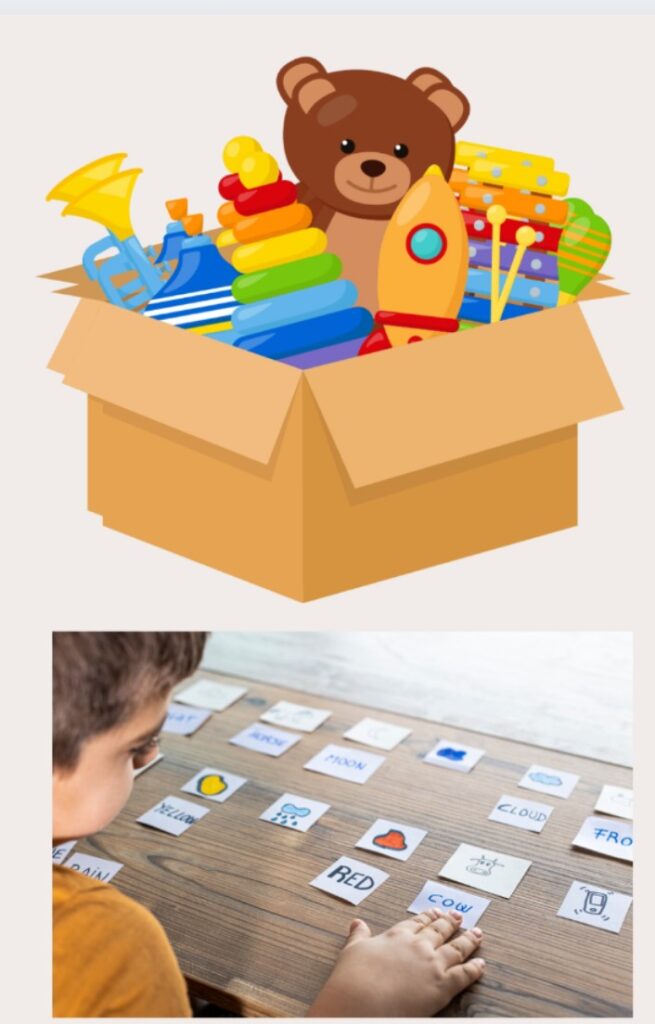As a parent, you’re constantly seeking ways to nurture your child’s speech and language development, and one often overlooked avenue is play. But did you know that play can be a powerful tool in enhancing your child’s communication skills? I am a speech and language therapist and a mother of two. Both my children spoke their first meaningful word at the age of 4 months. Isn’t it interesting? I spent time playing and chatting with them excessively until they were 10 years old.
Play enhances understanding and communication skills, which can make your little one academically brighter in the class. From simple activities with toys to more complex interactive games, every play session presents an opportunity for growth and learning. In this guide, we’ll delve into the world of play and explore how it can positively impact your child’s ability to communicate effectively.
The Power of Play: Enhancing Communication Skills
Exploring Toys for Communication Development
Here you can find my secret list of toys for your baby, which can help them in developing Speech sounds as well as language skills: However always respect choices of your child. Find something else if your child doesn’t like an animal. Play with a doll or vice versa.
1. Ball
2. Bubbles
3. Animal Toys- a mix of farm and wild animals
4. Vehicles
5. Blocks
6. Puzzles
7. Kitchen toys
8. Bathroom articles in toys
9. Dolls and Puppets
10. Clay
Here are our activities to play and learn to communicate
1. How to play with Ball
2. How to play with animals
3. How to play with vehicles?
4. how to play with bubbles
Points to remember: Before you play to enhance Speech and language
These are a few pointers to remember when working on the language and communication skills of your little ones:
- Let your child lead. He will find the way and tell you.
- Once chosen a toy by him remove other toys out of sight as the baby may become distracted by other toys and lose interest in you. Therefore, use one toy at a time. However, bubbles can be used for a required break and to add more fun.
- Always choose medium-sized toys that you can hold in your hands and show to the kids.
- The list above is arranged according to the hierarchy we use in the language development of toddlers. Preferably use according to this but I give more preference to a child lead play. you can tweak according to your toddler and have fun.

4. How to play with vehicles?
How to play with Ball
Naming: Take a softball and begin to play. Naming: Show your excitement that he has a ball and say, “Wow, a ball!” Interaction: “Come on, let’s play with a ball.”
Playing: Throw the softball and ask him to catch. I know your baby might not be able to catch and throw, but it’s okay. Throw the ball towards him and say, “Throw ball,” then ask him to throw. When he tries to throw towards you, say, “I am catching,” and show your hands for catching.
Listening skills: Add ‘ball’ most of the time while you are playing.
Speech sound teaching: “B” is a bilabial sound and the easiest one, that most speech therapists teach in the beginning. Say “b-b-b-ball.” Show your lip movement to your child. You can do this in front of the mirror also to make him copy the lip movements to say the “b” sound and “ball”.
you can do different activities: throw up and catch, kick the ball, show colours of the ball, tell him it is soft and let him feel. After playing, keep the ball in the toy basket.
Play in the same way for two weeks, and your child may begin to speak “ball”, “b” sound, and maybe more words that you are using while playing.
Let me know if your child has learned something.
Read this- How to Calculate Language Age of your child
How to play with Animals to teach Speech and Language
1. First shop for farm animals and wild animals. If you already have some match the given list of animals: Cat, Dog, Lion, Horse, Sheep, Pig. Begin with these 6 animals.
2. Play with cat, tell name and look cat.
3. Cat says “Meow”. Try and make a real sound of cat.
4. You can show video of cat saying Meow and repeat the same sounds. Encourage your baby to repeat the same sound.
5. Show picture of cat and say ‘Meow’
6. Sing rhymes of animals and practice sounds- Check this short video to understand clearly
7. You can teach m sound here, by saying m-m- meow, B sound while teaching baba for sheep
How to play with bubbles
-
Take a large bottle of bubbles. You can either purchase a TalkTools bubble kit for prolonged airflow, which is highly effective for speech development. However, simple bubbles suffice for this activity.
-
Show them the bubbles, name them, and demonstrate how to blow.
-
Every time you blow bubbles, say “B-b-b- bubbles.” Ask, “Do you want to blow?” If they respond affirmatively, provide them with an opportunity to blow.
-
Then ask, “Do you want more bubbles?” or “Would you like more bubbles?” or “More bubbles”
-
Let’s blow bubbles together. The bubbles are flying, going up, popping, and coming down. Practice this vocabulary every time you play with them.
How to play with Vehicles to teach communication skills
Start by playing with your child’s favorite vehicle toy. If they don’t have a favorite, choose popular toys like a car, bus, plane, bicycle, etc.
- Introduce the Toy: Pick a vehicle toy and say its name, for example, “car.” Make the sound a car makes, like “Vroom,” and move it along a track you create or a premade mat with roads.
- Engage with Other Vehicles: Repeat the activity with other vehicle toys, naming each one and mimicking its sound.
- Specific Actions for Each Toy:
- Plane: Planes fly in the sky, so lift the plane up and make the sound it makes as it flies.
- Sing Nursery Rhymes: Use nursery rhymes like “Wheels on the Bus.” Sing the song and perform the actions.
- Say “Bus” and encourage your child to repeat it, but don’t pressure them. Focus on playing and making sounds naturally.
Remember, the goal is to play and enjoy the activity. Speech and language skills will develop naturally through these interactions.
READ FURTHER STRATEGIES
1- https://speechtherapys.com/2024/07/04/single-words-to-meaningful-language/
2. https://speechtherapys.com/2024/05/29/teaching-two-word-phrases-practical-techniques-for-parents/
If you want to learn more, please text or comment here, I will share the strategies for you, No charges.


Hey there! Do you know if they make any plugins to assist with Search Engine Optimization? I’m trying to get my
blog to rank for some targeted keywords but I’m
not seeing very good gains. If you know of any please share.
Appreciate it! You can read similar blog here: Lista escape roomów